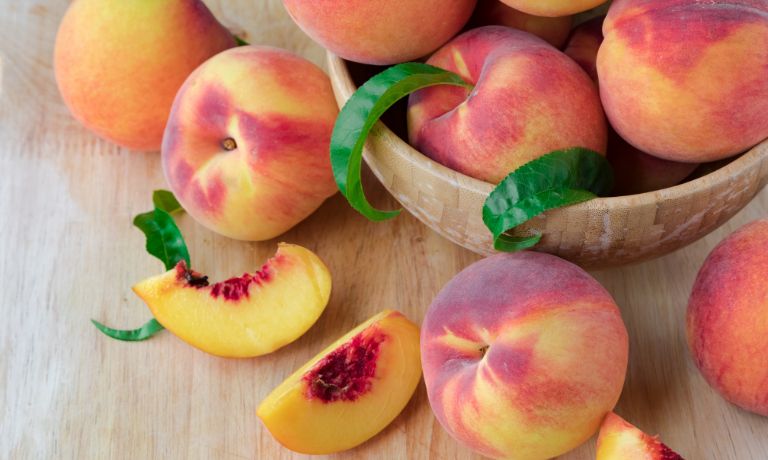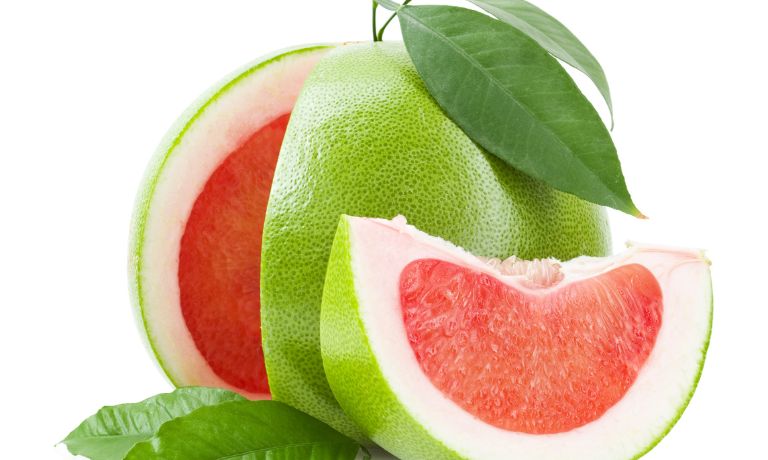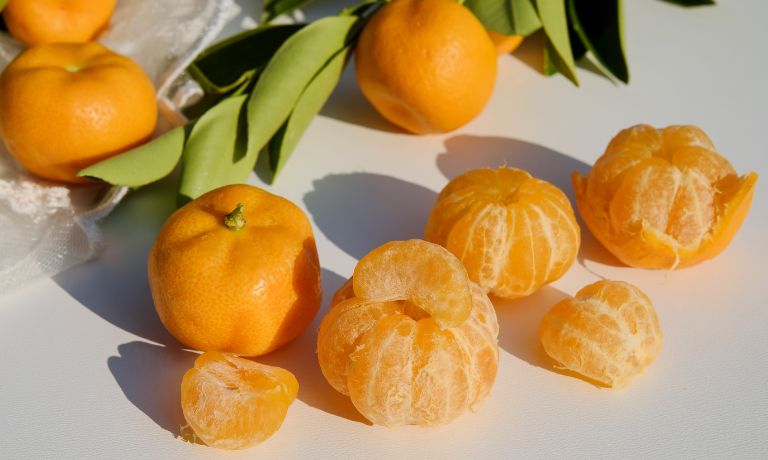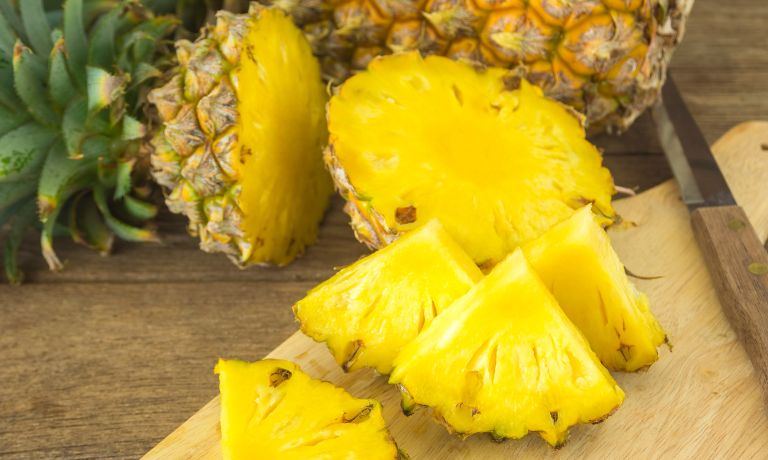Grapefruit is a popular breakfast food due to its wide range of nutrients and antioxidant properties, but many consumers still need help to eat it.
Luckily, plenty of other tasty fruits have similar benefits without the downsides associated with grapefruit.
This guide will provide an overview of some excellent options to substitute for grapefruit for anyone looking to reap the health benefits of eating grapefruit without any drawbacks!
What Is Grapefruit?
Grapefruit is a citrus fruit that is believed to have originated in Barbados.
It is a hybrid of the sweet orange and the pomelo, and its scientific name is Citrus × paradisi.
The fruit has a juicy pulp and can be either sweet or tart, depending on the variety.
Grapefruits come in various sizes, shapes, and colors including white, pink, and red.
Grapefruit is a popular choice for breakfast or snacking due to its refreshing taste and high nutrient content.
It can be enjoyed raw by slicing it in half or cutting it into wedges.
Other popular ways of consuming grapefruit include juicing, mixing the pulp with yogurt or cottage cheese, and adding it to salads.
Grapefruit adds to cooked dishes such as casseroles, stews, curries, soups, and baked desserts like pies and cakes.
Its acidic flavor can add a unique zing to savory dishes such as fish, poultry, pork, and beef.
Mix it with other fruits to create unique and delicious fruit salads.

Substitutes For Grapefruit
Many other fruits can be used if you’re looking for a substitute for grapefruit.
Orange
Orange is a citrus fruit that grows in tropical and subtropical climates.
It has a sweet-tart flavor, with some varieties having an almost tart lemon taste.
[display-posts id=”3298″ image_size=”thumbnail” posts_per_page=”1″]
The flesh of the orange can range from soft to firm and vary in color depending on the species and variety.
The sweetness of the orange can also be used to offset the tartness of the grapefruit, making dishes more palatable for those who find the natural bitterness too strong.
Additionally, oranges are often cheaper than grapefruits, making them a cost-effective alternative when budgeting.

Mango
Mango is a sweet, juicy tropical fruit that has been enjoyed by people worldwide for centuries.
It has a unique flavor that can be described as sweet and citrusy with hints of honeyed notes, and it can be used to add depth and sweetness to dishes in place of other fruits like grapefruit.
Unlike grapefruit, which is notoriously sour and acidic, mango has a milder flavor that can balance out sweet or savory flavors in recipes.
Mango also contains high levels of Vitamin A and C, making it a great nutrient-dense replacement for grapefruit in fruit salads and smoothies.
It can even be cooked into dishes like curries or used as an ingredient in sauces and dressings.
Mango is a great substitution for grapefruit that can add flavor and nutrition to any dish.

Peach
Peach is a stone fruit with juicy and sweet flesh, often slightly tart. It is related to plums, cherries, and nectarines.
Peaches are generally available in late summer and early fall but can be found year-round depending on where they are grown.
[display-posts id=”3223″ image_size=”thumbnail” posts_per_page=”1″]
Peaches have a unique flavor, making them a great substitute for grapefruit in certain recipes.
The sweetness of the peach adds a unique twist to dishes that would normally be too sour with grapefruit.
Peaches are also lower in calories than grapefruits, making them healthier for diet and weight loss.
Peaches contain essential vitamins and minerals such as vitamins A and C, potassium, and magnesium.
These benefits make peaches an excellent alternative for grapefruit in recipes or eating them alone.

Pomelo
Pomelo is a large citrus fruit from Southeast Asia closely related to the grapefruit.
It has a thick, usually green or yellow peel and a sweet-tart flavor with notes of honey.
Unlike other citrus fruits like oranges or limes, pomelos are much larger and can often reach up to the size of a soccer ball.
Pomelo can be used as a delicious and refreshing snack or be incorporated into many dishes like salads, salsas, drinks, curries, marinades and jams.
It is often used as a substitute for grapefruit in recipes due to its sweet-tart flavor profile.
The fruit is also popularly used as a garnish or topping on dishes like avocado toast and poke bowls.
Pomelo also has many health benefits due to containing high levels of Vitamin C, antioxidants, and fiber.

Tangerine
Tangerine is a citrus fruit with the same basic shape and size as a grapefruit.
It is smaller than an orange but larger than a mandarin. The skin of tangerines is thinner and easier to peel off than oranges.
[display-posts id=”3458″ image_size=”thumbnail” posts_per_page=”1″]
Tangerines typically have an orange-red color with darker shades on the outside, and the flesh is usually deep orange or slightly yellow.
When it comes to taste, tangerines offer a sweeter flavor than grapefruits.
They are also less acidic, making them great to use as an alternative to cooking and eating.
In addition, smaller tangerines make them easier to eat on the go or as a snack.
Tangerines can be used in various recipes, from salads to juices and desserts.
They are the perfect alternative to grapefruits for a slightly sweeter flavor without all the acidity.
Plus, using tangerines in recipes gives dishes an eye-catching, vibrant color that is sure to impress.

Pineapple
The pineapple, scientifically known as Ananas comosus or the common pineapple, is a tropical fruit native to South America but is now grown in many parts of the world.
It is eaten as a snack or used in cooking and baking for its sweet-tart flavor.
The fruit is an excellent source of vitamin C, manganese, copper, vitamin B6, dietary fiber, and folate.
Pineapple can be a great substitute for grapefruit in cooking because of its sweet-tart flavor profile.
It adds a unique flavor to dishes without being as sour or acidic as grapefruits tend to be.
Pineapple also pairs well with other fruits such as strawberries, blueberries, and mangoes.
Additionally, pineapples are often juicier than grapefruits, which means they can be used in sauces or as a topping for desserts without adding additional liquid.
Finally, pineapple’s versatility makes it an excellent choice if you want to try something new and exciting!
Add it to salads, smoothies, or even savory dishes with fish or chicken.

Lemon
Lemon is a citrus fruit commonly used as a substitute for grapefruit in cooking and eating.
Its juice has a bright, tart flavor that can be used to add zest to dishes or made into drinks like lemonade.
[display-posts id=”3011″ image_size=”thumbnail” posts_per_page=”1″]
Lemons also contain vitamin C, potassium, and other beneficial nutrients.
They can be grated into salads, squeezed onto fish, or mixed with other ingredients for marinades and dressings.
Lemons also add an acidic flavor to sauces, soups, and savory dishes.
In addition, lemon juice can be used as a natural preservative in many recipes.
The sour flavor of lemons helps balance out the sweetness of other ingredients, making it a perfect alternative to grapefruit when cooking.

FAQs
What Fruit Resembles Grapefruit The Most?
Ugli fruit is the closest fruit in taste and texture to a grapefruit.
Ugli fruits are similar in size, shape, and color to grapefruit but have a slightly sweeter flavor.
They also have a thick, yellowish-green rind that is easy to peel and sections of juicy flesh similar to grapefruits.
Does Grapefruit Resemble Oranges?
Yes, grapefruit does resemble oranges.
They both have a round shape and are similar in size. Both fruits have thick skins that can be peeled off to reveal juicy pulp.
The main difference is that grapefruits tend to taste more tart, whereas oranges are sweeter.
Are Citrus And Grapefruit The Same Thing?
No, while both citrus fruits, grapefruit and oranges, are different.
Oranges are a type of citrus fruit that is round and has a sweet taste, with many varieties such as navel, blood orange, valencia etc.
Conclusion
Grapefruit is a popular citrus fruit with many health benefits. However, it can be too tart or sour for some people’s tastes.
Fortunately, several other fruits can substitute for grapefruit cooking and eating. These include pomelo, tangerine, pineapple, and lemon.
Each of these fruits has its unique flavor profile and health benefits, making it a great alternative to grapefruit.
Use these fruits in salads, sauces, marinades, or snacks for added flavor and nutrition.

